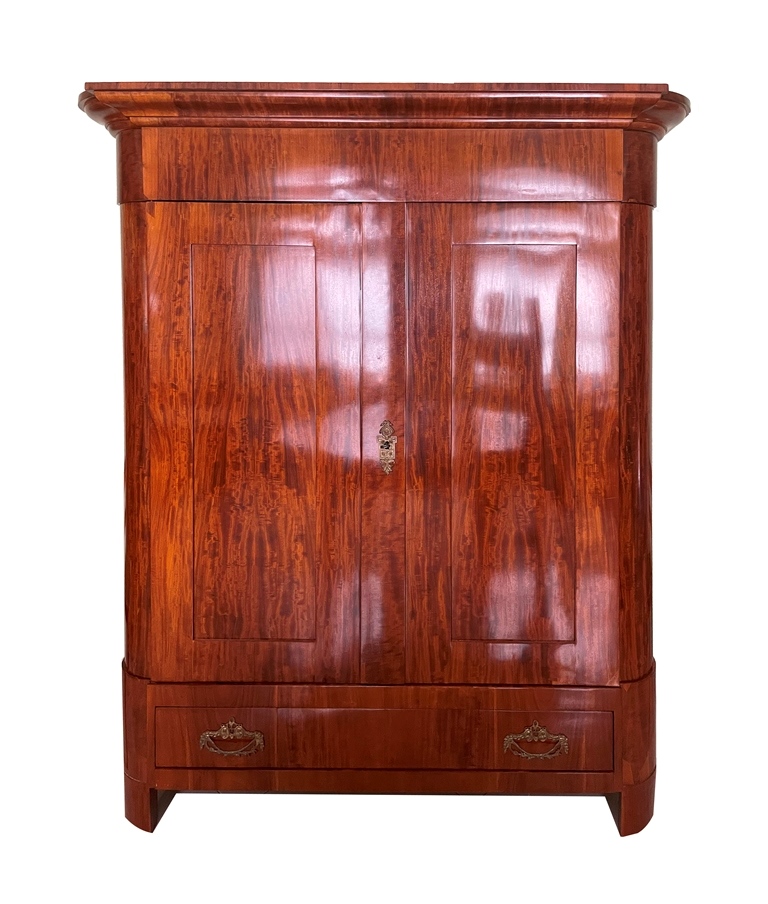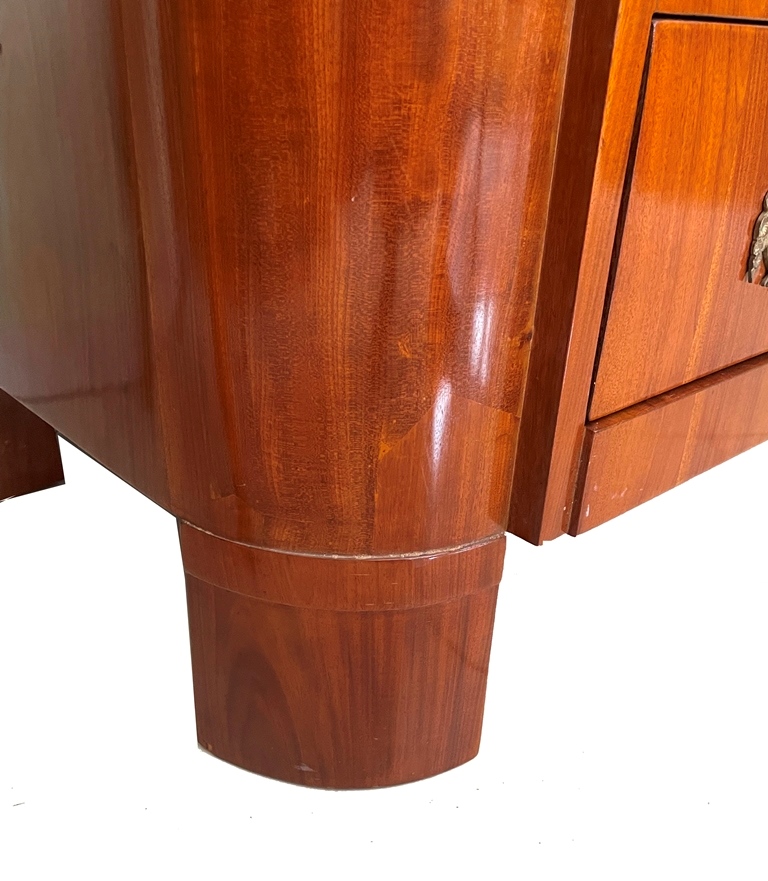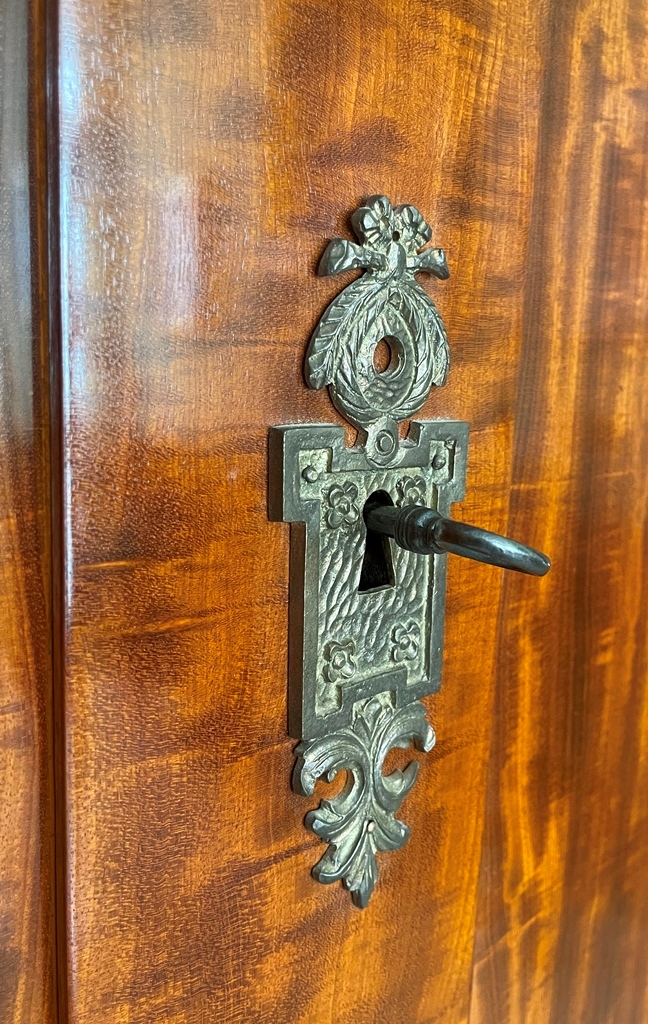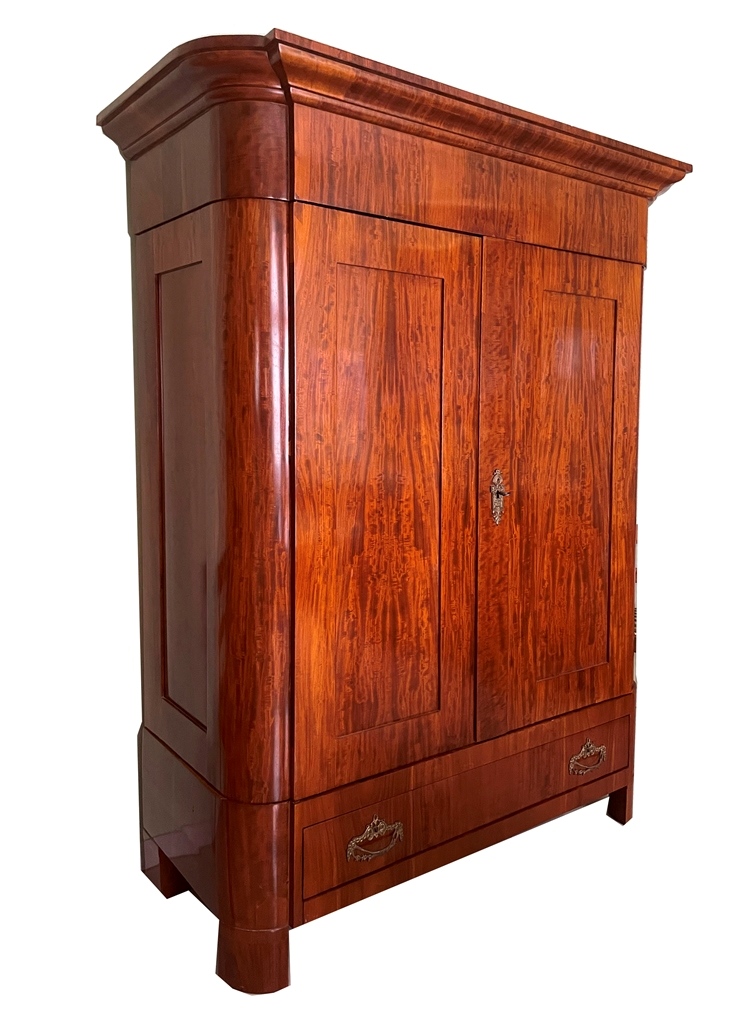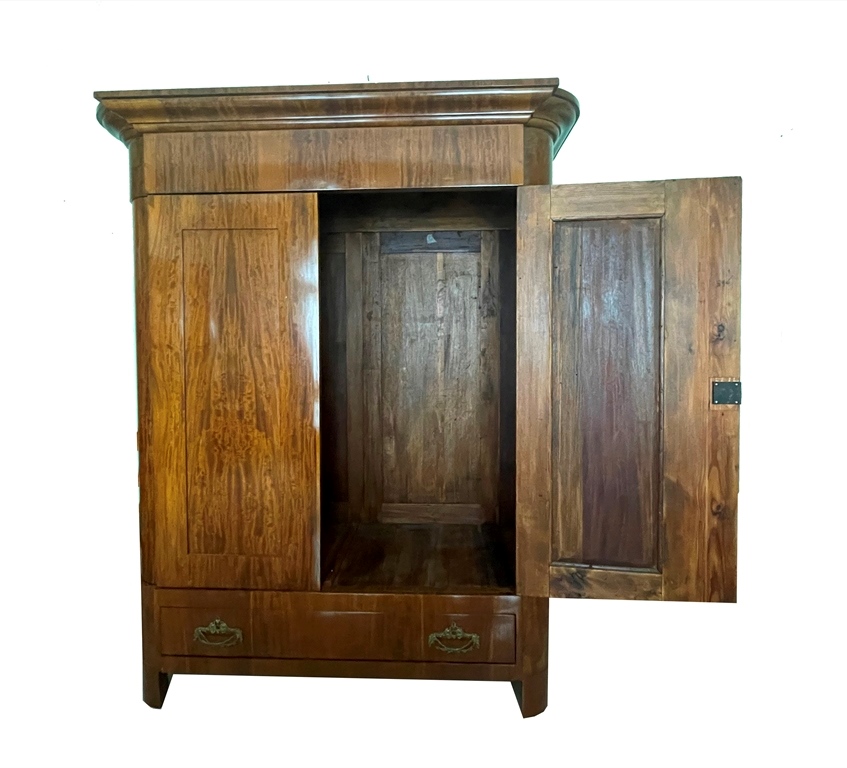Biedermeier cupboard around 1830
Nr. 2429 | 4.200,--Euro
Biedermeier cupboard
German around 1830.
Two-door body, can be completely dismantled, beautiful fittings on the continuous drawer in the base.
Height: 203 cm | Head width: 162 cm | Head depth: 68 cm | Body width: 142 cm | Body depth: 58 cm
Price: € 4.200,–
(Differential taxation according to §25a UtsG)
Dainty Biedermeier cupboard that can be dismantled into hat, base, sides and doors.
Interior installation of clothes rail or shelves available on request.
The Biedermeier era
The Viennese Biedermeier was a cultural and stylistic era that developed in Vienna and other parts of the then Austrian Empire in the mid-19th century. It was characterized by a return to bourgeois values, comfort and harmony, and reflected the zeitgeist of the up-and-coming bourgeoisie.
The term “Biedermeier” is derived from the literary work “Gottlieb Biedermaier” by the Austrian poet Ludwig August Frankl and refers to a way of life that is perceived as conservative, i.e. simple and bourgeois. The Viennese Biedermeier period stretched from around 1815 to 1848, during the reigns of Emperor Franz I and later of his son Ferdinand I.
In the art and architecture of the Viennese Biedermeier period, there was a departure from the pompous and decadent styles of the Baroque and Rococo. Instead, the focus was on elegant simplicity and an emphasis on clean lines and symmetrical shapes. The furniture was mostly made of light wood such as cherry or birch and was characterized by its simple elegance.
The bourgeois ideal of Viennese Biedermeier was also reflected in society , lifestyle and People valued a comfortable home, an intimate and sociable atmosphere, as well as education and cultural activities. Literature, music, theater and socializing with family and friends were important parts of bourgeois life.
The Viennese Biedermeier had a great influence on the art, fashion, music and literature of that time. It was a period of cultural boom in which many important artists, writers and composers created their works. Well-known representatives of the Viennese Biedermeier period include the writers Adalbert Stifter and Ferdinand Raimund and the composer Franz Schubert.
Viennese Biedermeier
Today the term “Biedermeier” is often used to describe a particular style or way of life that is seen as cosy, homey and somewhat conservative. However, Viennese Biedermeier has a special place in the history of Austrian culture and remains an important source of inspiration for art and design.
Mahogany is a type of wood known for its beauty, strength and durability. There are different types of mahogany, but generally the term refers to wood that comes from trees in the Swietenia genus. These trees grow mainly in the tropics, especially in Central and South America.
Mahogany is characterized by a reddish-brown to dark brown color that often develops an attractive patina over time. The wood has a fine to medium texture and a straight grain that gives the finished product an elegant look.
Because of its natural properties, mahogany is highly sought after for making high quality furniture, doors, musical instruments, boat decks and other sophisticated woodwork. It is known for its strength, toughness, and resistance to rot, insect attack, and moisture.
However, it is important to note that mahogany trade may be restricted as some species are critically endangered. International trade in certain species of mahogany is regulated by the Washington Convention on International Trade in Endangered Species (CITES) to ensure the protection of stocks and the preservation of biodiversity.
Biedermeier at RSA Wiesbaden
You can find a wide selection of Biedermeier furniture and decorative art pieces.
Regine Schmitz-Avila – your Biedermeier specialist for cabinets, tables, and chests.
